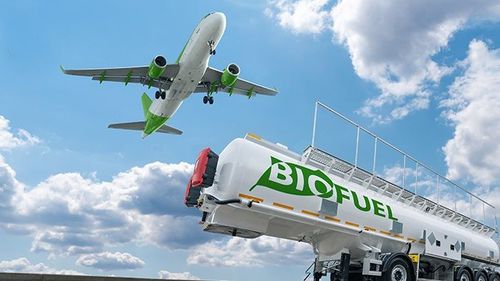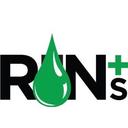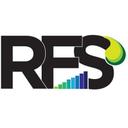CoBank: Path forward for SAF highly dependent on 45Z guidance, long-term incentives

SOURCE: CoBank
October 28, 2024
BY Erin Voegele
Sustainable aviation fuel (SAF) offers a significant opportunity for growth in the biofuel sector and a new revenue stream for farmers, but realizing that potential will depend on the establishment of favorable policies and adequate incentives, according to a report released by CoBank’s Knowledge Exchange on Oct. 25.
The report, titled “Charting the Path Forward for SAF,” indicates the federal government’s goal of producing 3 billion gallons of SAF by 2030 is within reach, but additional government and market incentives will be required to encourage expansion. Upcoming guidance for the 45Z clean fuels production credit, the outcome of the 2024 election, and other factors will all impact development of the SAF industry, CoBank said in the report.
Advertisement
The 45Z credit is currently in place for 2025-2027, but the U.S. Department of Treasury and Internal Revenue Service have yet to release guidance for the credit. An updated version of the U.S. Department of Energy’s GREET model, which will be used to calculate greenhouse gas (GHG) reductions for the purposes of the credit, is also not yet available. According to CoBank, the 45Z guidance will set the state for whether farmers and the industries that serve them can find new revenue opportunities with the expansion of the SAF market. The report notes that auditing and accounting requirements for climate-smart agricultural practices may limit farmer profit prospects. In addition, the delayed release of the GREET model is causing uncertainty for farmers that need to make farm input and conservation decisions ahead of the 2025 growing season.
The report also discusses the impact of SAF offtake agreements and the potential shift from renewable diesel production to SAF production capacity for the industry. According to CoBank, the SAF industry needs longer-term government incentives and additional offtake agreements to spur growth. The report notes that airlines have been reluctant to issue long-term offtake agreements for SAF as high SAF costs could make them uncompetitive to competitors with lower SAF use.
Advertisement
According to the report, potential higher costs and emission requirements and emission requirements act as a profitability deterrent for renewable diesel producers to shift to SAF. CoBank also notes that in the absence of favorable policy incentives or commitments from airlines or consumers in paying higher prices for SAF, a refinery would make a higher profit producing renewable diesel.
Within the report, CoBank specifically addresses SAF potential in the ethanol industry via alcohol-to-jet technologies. If the updated GREET model for the 45Z credit adequately accounts for the emissions reductions for on-farm practices, CoBank said ethanol producers will be able to obtain lower carbon intensity score feedstocks to qualify for the credit. Ethanol plants that have access to carbon capture and storage (CCS) and utilize the 45Q tax credit for carbon capture, utilization and storage (CCUS), however, cannot stack the 45Q and 45Z tax credits to capture higher payments, according to the report.
A full copy of the report is available on the CoBank website.
Related Stories
MOL Group has produced a diesel fuel containing hydrotreated vegetable oil (HVO), and sustainable aviation fuel (SAF) at the refinery of Slovnaft in Bratislava. The quality of the products has been verified by radioisotope analysis.
More than 1.76 billion renewable identification numbers (RINs) were generated under the Renewable Fuel Standard in January, down from 1.91 billion generated during the same period of 2024, according to data released by the U.S. EPA on Feb. 20.
The U.S. EPA on Feb. 20 released updated small refinery exemption (SRE) data showing that 13 previously denied SRE petitions for Renewable Fuel Standard compliance years 2021 and 2022 are being reconsidered. No new SRE petitions were filed.
A coalition of biofuel, agriculture, fuel retailer and petroleum trade groups on Feb. 19 sent a letter to U.S. EPA Administrator Lee Zeldin urging the agency to set robust, timely, multiyear RFS RVOs for 2026 and beyond.
OMV Petrom has announced the start of construction for a sustainable aviation fuel (SAF) and renewable diesel (HVO) production unit at the Petrobrazi refinery in Romania. The new facility will have an annual capacity of 250,000 tons.
Upcoming Events










